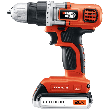Once you have finished framing your walls, and hung some drywall, you still have another step to take before you are finished. That step is finishing drywall. Finishing drywall is a project that even the most novice of home improvement enthusiasts can do. Be aware though that this process will take about three days, where you can spend up to four hours each day working on it. Ideally, you should be able to begin the project on a Friday night, and be completed and ready to begin painting on Sunday. All you need to do is follow these simple steps.
Materials:
- Drywall tape
- Joint compound
- 200-grit sandpaper
- 200-grit sanding mesh
- Drywall knives (sized 6, 8, and 12 inches)
- Sponge
- 5-gallon bucket
- Pole sander
Procedure:
- Cover all nail heads. Use a small, 6-inch, drywall knife and begin covering all the nail heads, screw heads, dimples, or divots that you can find on the wall. As you are doing this, make sure that you are using the smallest amount of compound possible.
- Apply joint compounds. At each corner of the room, start near the top of the wall and begin applying some of the joint compound. Use the smallest possible drywall knife to do this, and don't be afraid to reload the drywall knife as necessary to get the job done. Hold the knife at an angle, and draw it downwards in a steady even stroke to apply the compound. Repeat this step on each side of the corner, and at each corner in the room. Repeat the same process at each location where there is a seam or space between two pieces of drywall.
- Tape the seams. Apply drywall tape to all of the seams that you just applied the compound to. Use a single large piece of tape to avoid any wrinkles or slipping of the tape. This needs to be done while the compound is still moist. Ensure that the tape stays in place by pushing the tape into the joint compound every twelve inches. Do not push too heavily, or you may damage the tape and the wall.
- Apply first coat. Start in the middle of the wall, and begin applying some of the drywall compound over the top of the tape. Do this by using the 6-inch knife and holding it at an angle to both the wall, and the seam. Draw it along the wall in a steady motion using consistent pressure to help embed the tape into the wall. Use as little of the joint compound as possible but don't be afraid to reload the knife as you need it. Repeat this step for every seam in your room.
- Allow ample time for drying. After you have applied this first coat, allow it to dry overnight.
- Apply second and third coats. Apply your second and third coats by following steps 1, 2, and 4. For the second coat instead of using the 6-inch drywall knife use the 8-inch drywall knife. For your third coat you need to use the 12-inch drywall knife. Allow ample time for drying between each coat to prevent any damage from occurring.
- Sand. After the final coat has dried, you will need to sand the areas that you finished. You can do this by using either 220-grit sand paper or sanding mesh, and only a little bit of pressure. Be very gentle when you do this to avoid damaging or gouging the walls. A dustless method for sanding is to use a barely damp sponge to smooth out the irregularities. However, you will need to rinse out the sponge frequently.
Author Bio
Lee Wyatt
Contributor of numerous Tips.Net articles, Lee Wyatt is quickly becoming a regular "Jack of all trades." He is currently an independent contractor specializing in writing and editing. Contact him today for all of your writing and editing needs! Click here to contact. Learn more about Lee...
Recognizing Childhood Obesity
It seems like you can't turn on the news, television, or even the radio anymore without hearing something about childhood ...
Discover More
Installing a Fence
Whether you are looking to increase the safety of your home, or simply want to add a design element, installing a fence ...
Discover More
Floor Waxing
Waxing a floor is something that any homeowner can do, and frankly something that should be done on a regular basis to ...
Discover More
More Home Improvement Tips
Understanding Wallboard Finishing Levels
If you are thinking of having any type of wall work done in your home, then it is a good idea to understand the basics. ...
Discover More
Repairing Cracked Plaster
It is a sad fact of life that plaster walls will become cracked, or have some fairly nasty holes after a while. Repairing ...
Discover More
Patching Cracks in a Wall
Homes and business suffer plenty of wear and tear. Leaning to fix cracks in the walls of your home or business can help ...
Discover More

Comments